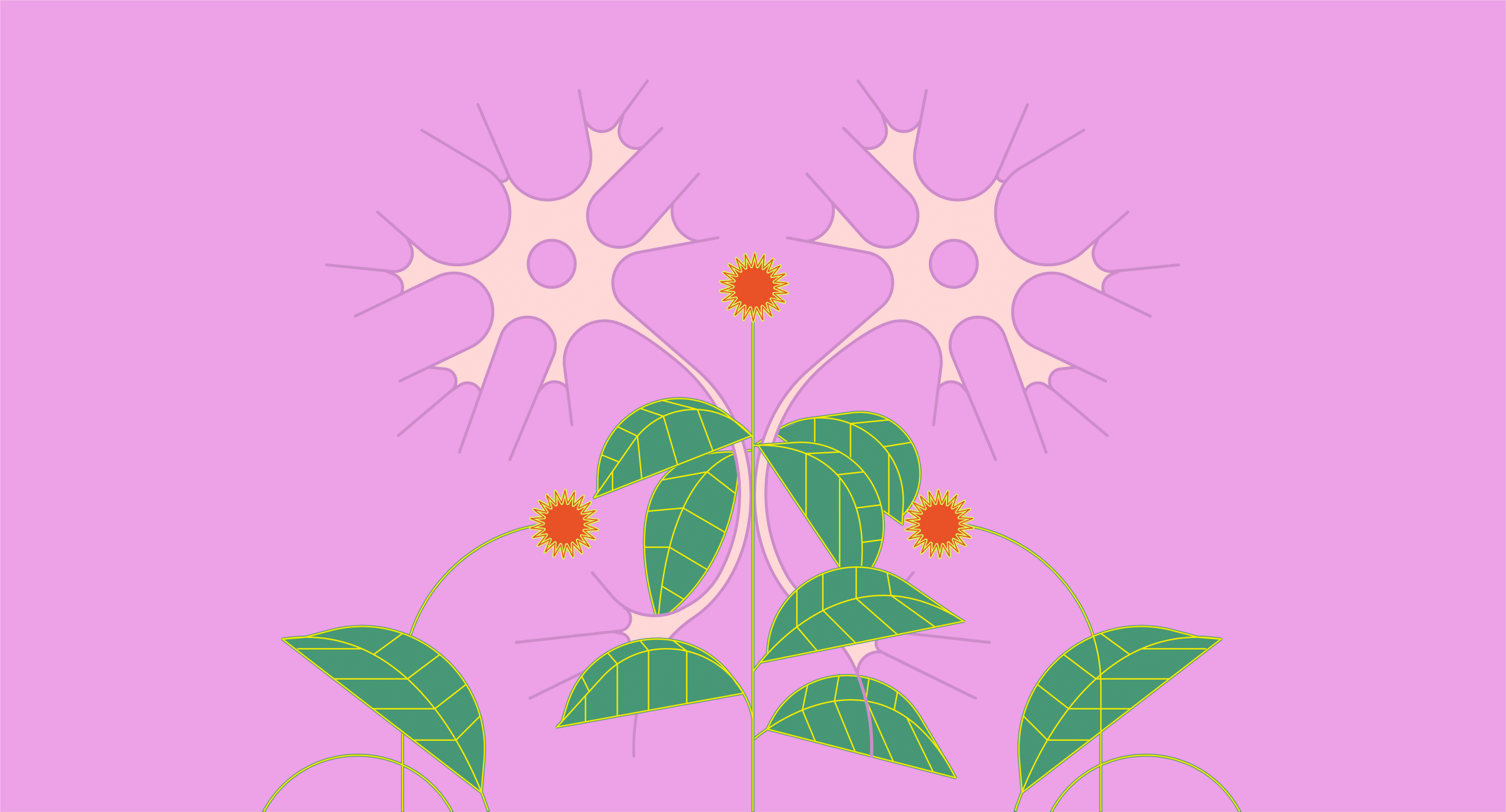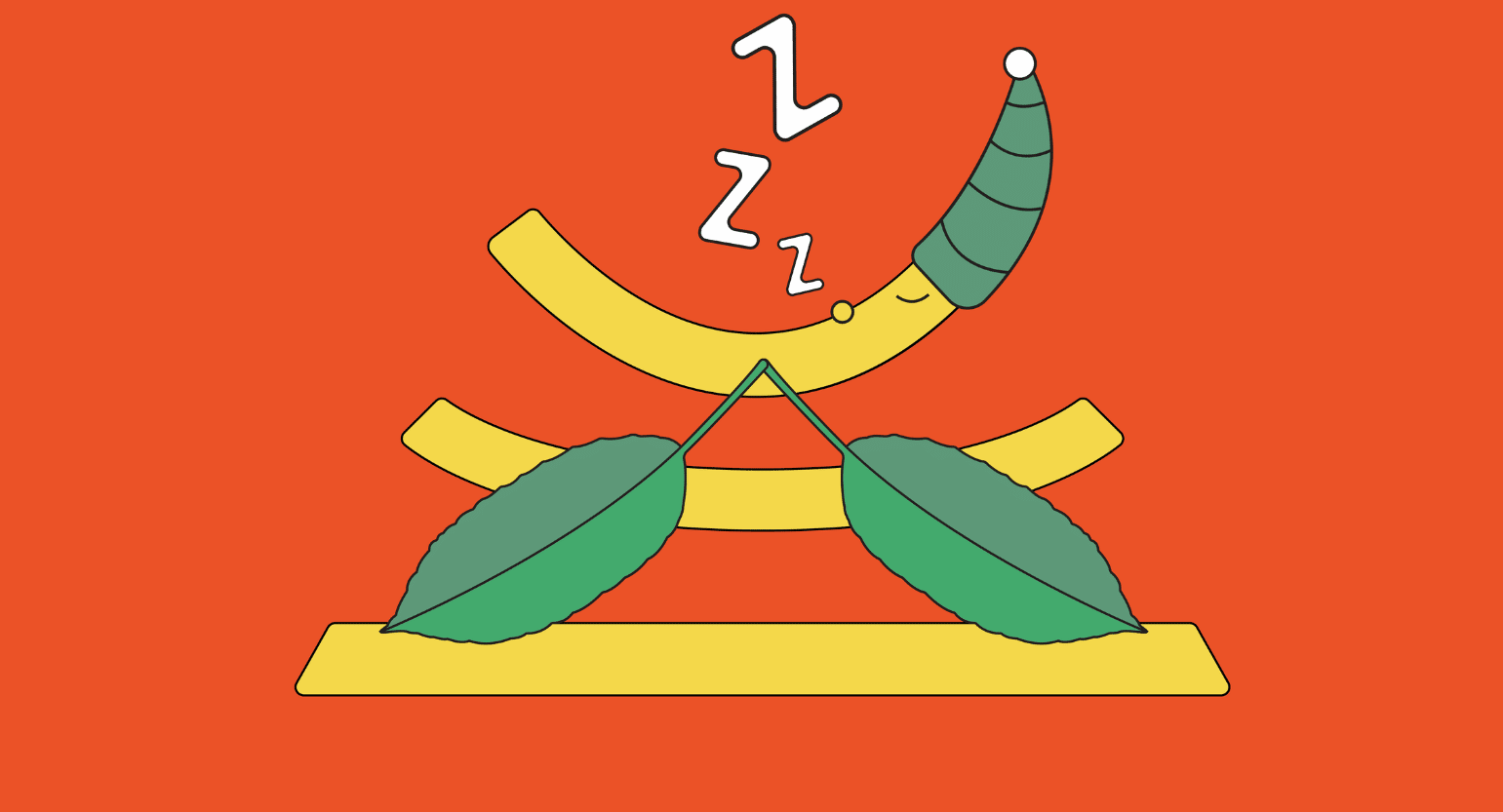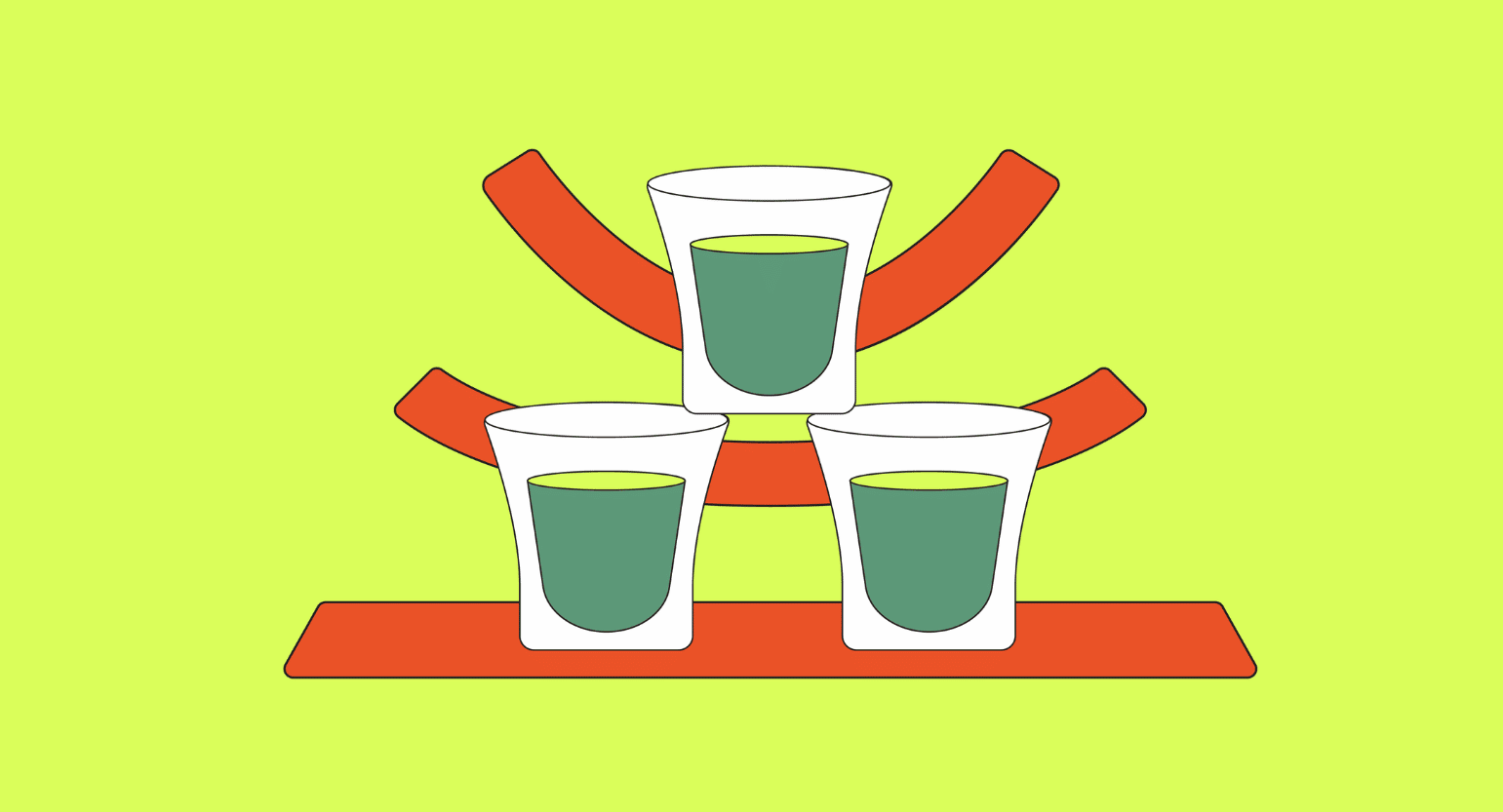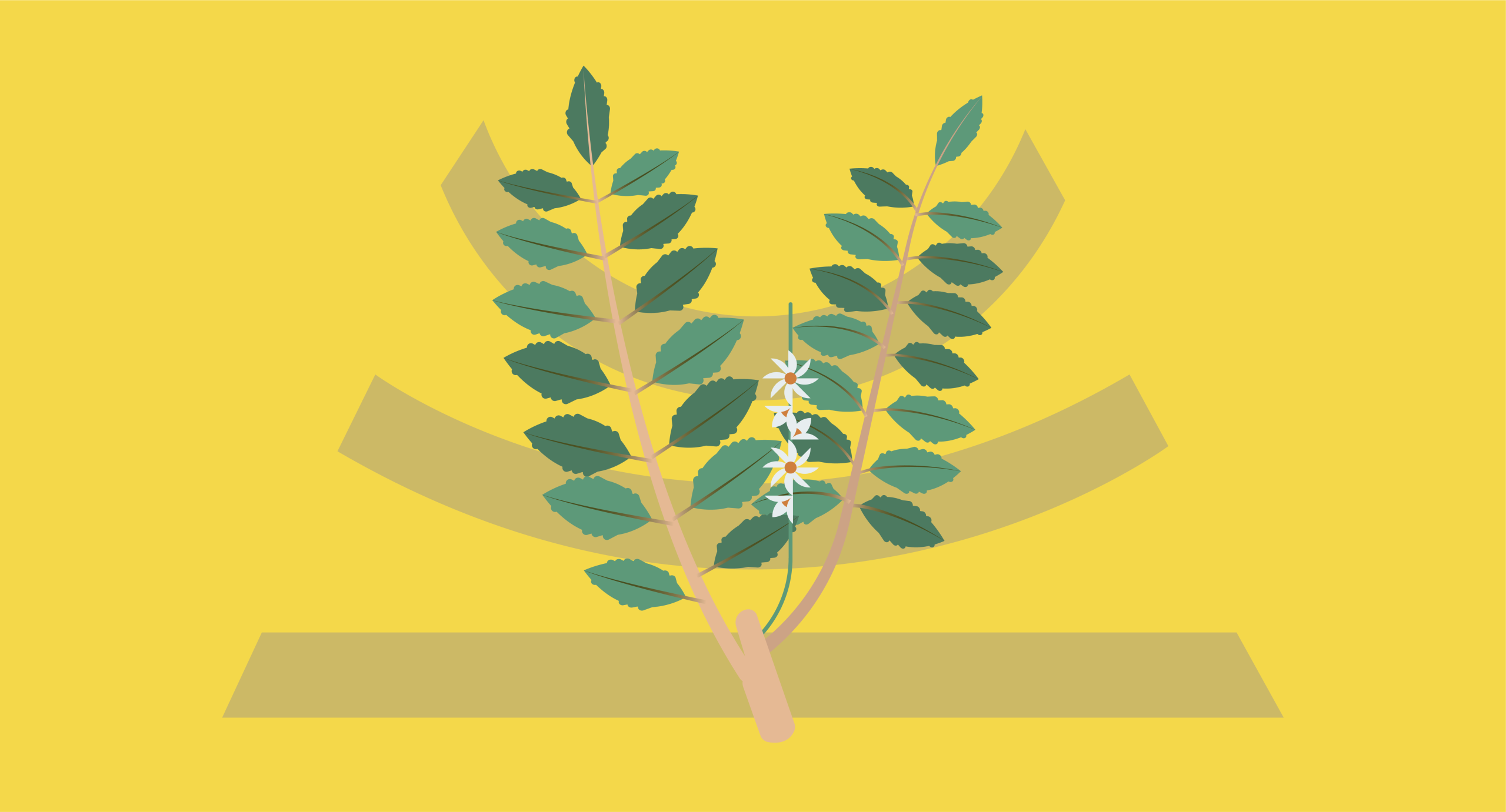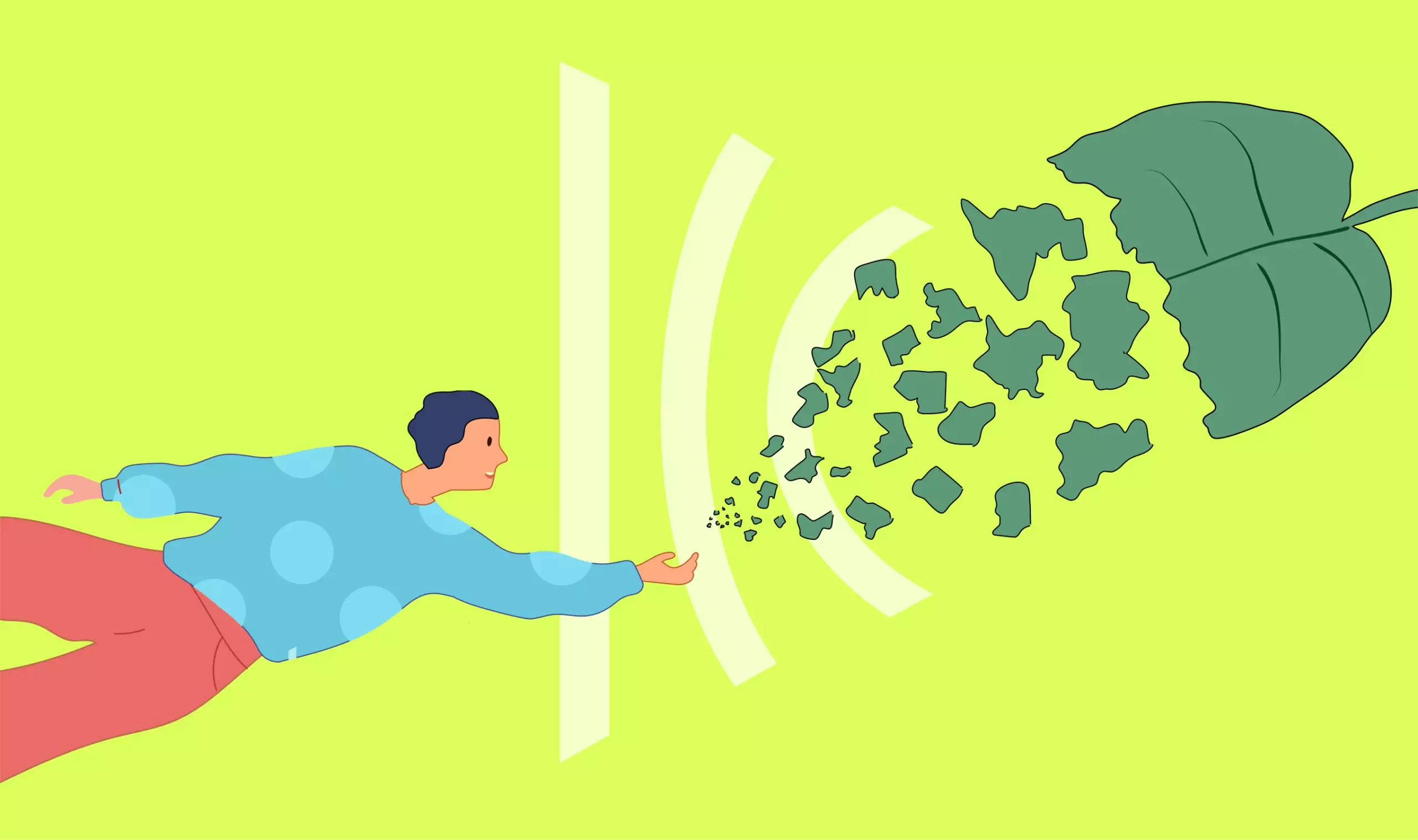About Guarana
The Guarana plant grows natively in the rainforests of the Amazon. This massive rainforest, known to many as the Lungs of the World, spreads throughout several South American countries and is home to a greater range of plant and animal species than anywhere else on the planet.
The guarana tree is loaded with several different bioactive compounds, most stimulating in nature (think caffeine, theophylline, theobromine, etc.). There are also many antioxidants and other health-promoting agents in the plant.
Guarana’s History
The Guarani tribe closely relates to the guarana plant, as you can tell by the name. Their preferred method of using Guarana is to brew the seeds into a stimulating beverage that promotes wakefulness and focus.
The guarana plant itself gets its name from one of the Guarani tribe’s words: guara-na.
This word originates from the Satere-Maue word for the plant, warana, which means “a fruit like the eyes of the people.”
The Satere-Maue origin myth also accounts for Guarana, stating that it originated by springing forth from the eye of a murdered boy [1].
It does well, then, to explain the appearance of the guarana fruit. The fruit displays a range of hues from deep brown to dark red.

The seeds within are black and covered, partly, by white arils, an extra seed covering that extends to protect them.
When the fruit is split open, the contrast between the outer and inner colors is often compared to eyeballs. This led to the creation of a myth among the Satere-Maue people and the eventual naming of the fruit.
In recent years the guarana bean has found its way into the Western world, where it has become popular in numerous energy drinks and all-natural stimulating beverages.
Guarana Characteristics
Parts Used
The seeds are by far the most common part of the plant used, although alkaloids have been detected in the leaves, stem, and bark.
Guarana Taxonomy
| Kingdom | Plantae |
| Subkingdom | Tracheobionta |
| Division | Magnoliophyta |
| Class | Magnoliopsida |
| Order | Sapindales |
| Family | Sapindaceae |
| Genus | Paullinia |
| Species | Paullinia cupana |
Guarana is a creeping shrub that grows natively throughout the South American Amazon. There are several varieties of Guarana.
Paullinia cupana var. typica, also known as Venezuelan Guarana, and P. cupana var. sorbillis (known as Brazilian Guarana) are the two most common, with Brazilian Guarana being the most famous export and the most well-studied [2].
The plant’s leaves are alternate and odd-pinnate, with oval and serrated leaflets. The bottoms are venous, the tops glossy.
The racemes of Guarana can contain up to 95 flowers and are about 30 cm in length.
Each flower has a calyx containing five sepals. The corolla consists of 4 petals. The flowers are pseudo-hermaphroditic.
The fruit is a capsule that begins its life dark green and becomes yellowish-orange or red as it matures.
Common Names
Brazilian cocoa, chengrapi, macota, urana, narana, Va Ran, guariana, guaranauva.
Herbal & Pharmaceutical Actions
Guarana has numerous herbal and pharmacological actions.
Herbal actions: Astringent, adaptogen, CNS stimulant, cardioprotective, antioxidant, analgesic, psychoactive, nootropic
Pharmacologically it is described as a stimulant, antimicrobial, chemoprophylactic, antigenotoxic, antidepressant, anxiolytic, and anti-amnesic [3].
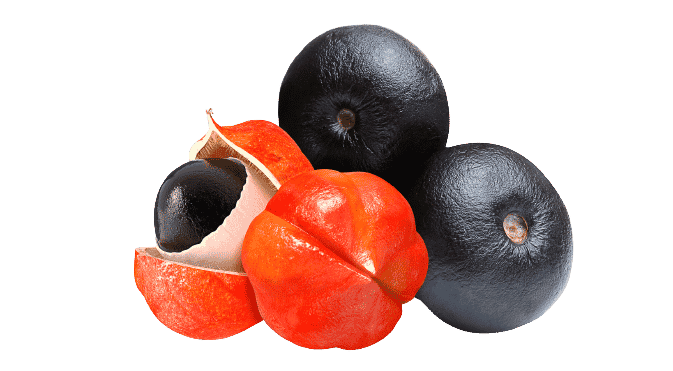
Constituents & Alkaloids In Guarana
The distribution of alkaloids in Guarana varies immensely.
Guarana’s stimulating action is mainly due to caffeine. The plant contains more caffeine than any other plant in the world, with levels ranging from 2 to 7.5% of its dry weight [1].
This amount is about four times as much caffeine as in the coffee plant.
There is enough caffeine to significantly augment cognition and enhance focus, mood, and physical and mental performance, but other active constituents are involved.
In addition, caffeine is found only in the seeds; the aril surrounding the seed is almost entirely devoid of alkaloids.
Guarana contains several saponins and polyphenols, tannins, catechins, and epicatechin.
The bioactive compounds combine to produce the unique effects of Guarana. The most potent constituents of Guarana, however, are its purine alkaloids.
Other constituents include:
- Starch (60 g per 100 g)
- Protein (~7.5 g per 100 g)
- Sugars (~10 g per 100 g)
- Fiber (2.4-3.2 g per 100 g)
- Pentosan (0.2-0.6 g per 100 g)
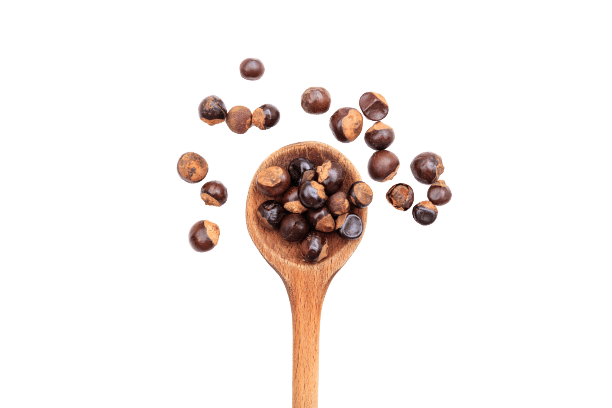
Purine Alkaloids
Purine alkaloids are widely distributed throughout the plant kingdom. They are usually found in tropical and subtropical plants and are limited to dicotyledonous species [4].
Dicotyledon species are a subclass of angiosperms that produce an embryo with two cotyledons, usually with their floral organs present in cycles of four or five.
Purine alkaloids are secondary metabolites synthesized from nucleotides.
Nucleotides are the basic building blocks of both DNA and RNA. Nucleotides consist of a sugar molecule attached to a phosphate group and a base that contains nitrogen.
The most well-known purine alkaloid is caffeine. Other examples of purine alkaloids include theacrine, found within the seeds of many Theobroma species.
Theacrine is not, however, found in the most well-known Theobroma plant: Theobroma cacao, or chocolate.
Guarana is also a rich source of two compounds in a family called methylxanthines. Methylxanthines are purine alkaloids found in almost 100 species throughout 13 different orders in the plant kingdom [5].
The two most predominant in Guarana are theophylline and theobromine. You may be familiar with these compounds due to their presence in raw chocolate and yerba mate.
The biosynthesis of purine alkaloids is well studied in the Theobroma species and the Camellia and Coffea species. Still, there is little research available on the production of purine alkaloids within Guarana.
Caffeine, for example, is known to be produced through a metabolic pathway that begins with a compound called xanthosine. The metabolism process is xanthosine -> 7-methylxanthine -> 7-methylxanthine -> theobromine -> caffeine; caffeine’s catabolism leads to theophylline.
Caffeine concentration tends to be higher in young and immature tissues of the guarana plant. The biosynthesis occurs in the leaves and the outer part of the fruit, according to molecular and biochemical analysis [6].
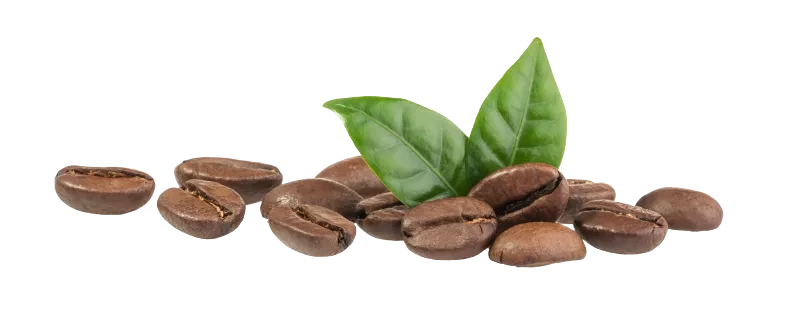
As the plant ages, the concentration of purine alkaloids tends to decrease. Caffeine synthase, an enzyme that catalyzes the biosynthesis of production, is highest in the seeds of immature fruit.
In this analysis, theobromine was the alkaloid present in the highest concentration.
It was present in more significant amounts than caffeine in the leaves, stems, inflorescence, and pericarps. Caffeine accumulated in the seeds at levels between 3.3% and 5.8%.
Pharmacology of Guarana
The absorption of caffeine from the guarana plant occurs at the same rate as it does from other sources, including beverages [7].
This is impressive since caffeine and alkaloids, in general, tend to absorb more quickly when consumed in liquid form.
Caffeine and other purine alkaloids are stimulants of the central nervous system (CNS) and the respiratory system. Caffeine is the most potent in this regard.
Theophylline is less active in the CNS, although it is an effective cardiac stimulant, helping to dilate the coronary arteries and relax smooth muscle tissues [8].
Theobromine is hardly active in the nervous system, though it produces the most apparent cognitive and emotional improvements.

Theobromine is also a powerful cardiac stimulant.
Combined with caffeine and theophylline, this can offset some potential dangers associated with excessive caffeine consumption. By helping to dilate the coronary arteries, it can reduce blood pressure [9].
Antioxidant Activity of Methylxanthines
Methylxanthine compounds are known to produce powerful antioxidant effects [13].
Caffeine is an effective antioxidant and can scavenge hydroxyl and alkoxyl free radicals. It’s a valuable agent for helping prevent cell damage by limiting lipid peroxidation.
The activity of methylxanthines, especially of theobromine and theophylline, involves several biological processes. These include:
- Antagonism, or inhibition, of adenosine receptors. Adenosine is involved in promoting and regulating sleep, maintaining physical and mental arousal states, and managing cerebral blood flow [12].
- Phosphodiesterase inhibition. This helps enhance blood flow throughout the body and can prevent issues like cardiac arrest and erectile dysfunction [11].
- Modulation of GABAA receptors. The GABA system is an inhibitory system that helps to modulate the transmission of neuronal signals in the nervous system. Stimulating the GABA system helps to promote relaxation and reduce symptoms of stress and anxiety.
- Methylxanthines don’t simply release or activate the GABA receptors, though. One pig study showed that methylxanthines act on adenosine A2A receptors in GABAergic neurons. This prevents laryngeal chemoreflex that can result from released GABA [14].
- Regulation of intracellular calcium. Calcium levels regulate almost every function of the cell. Helping to regulate and maintain these levels is vital for proper cellular communication. Activating the A3 adenosine receptors tends to increase calcium exchange [10].
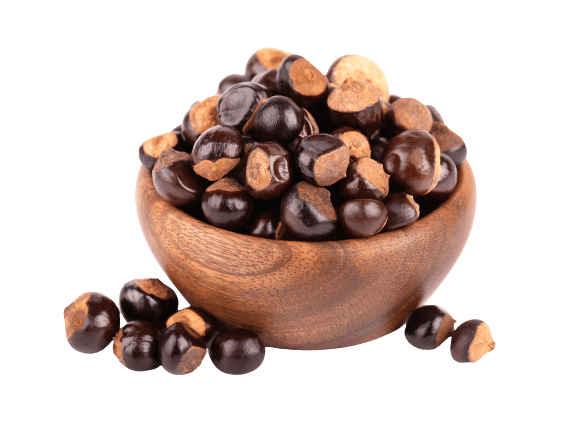
The primary action of these compounds is inhibiting adenosine.
This allows for the release of neurotransmitters such as dopamine, adrenaline, and serotonin. The result of this is enhanced mood, energy, and focus. As mentioned, adenosine A3 receptor activation increases calcium channel activity and can improve cellular function.
Uses of Guarana
Guarana has a rich history of use among the indigenous peoples in the regions where it grows. The plant is most heavily concentrated in Brazil, especially in the Amazonas and Bahia.
The guarana plant, initially revered as an energy tonic and a potent medicinal agent for the treatment of various ailments, has fallen victim to modern marketing.
Nowadays, it is known to most people as an aphrodisiac and a stimulant, a ‘supplementary’ ingredient that improves the stimulation provided by caffeine in energy drinks. Few everyday individuals seem to know that Guarana is a caffeine source.
Traditional Use
Guarana was first domesticated by the people living in the interfluvial forests between Tapajos and lower Maderia in the Amazon of Brazil.
We don’t know which indigenous tribe first domesticated the plant, but the Satere-Maue are among the most prolific cultivators of the plant, and their history and mythology are rich with its usage.
Early Amazon explorers noted how this tribe attributed as much respect and value to Guarana as the Europeans did to gold.
Reports noted that people consuming Guarana could hunt extensively from day to day without feeling hunger pangs [15].

The Amazonian people used Guarana to help treat diarrhea, reduce fatigue and hunger, and reduce the discomfort associated with arthritis. It was also used as a diuretic to reduce fluid buildup.
One of the most popular preparations involved the crushing of the guarana seed. This crushed seed was then made into a beverage and consumed recreationally or medicinally.
Guarana seeds are generally roasted in a hut with open sides. The women of the Satere-Maue people roast the seeds, stirring them and occasionally smelling one of their seeds to see if they are ready to come off of the griddle.
Once sufficiently roasted, the seeds are ground in a large mortar and blended with water. The resulting mixture is then shaped into cylinders called bastao.
These are then dried in the sun before being smoked in special abodes for several weeks to produce a unique taste.
The smoking of the Guarana also increases the plant’s longevity. Powdered Guarana tends to lose its flavor and potency after several months, whereas the cylinders can retain both for up to a year [1].
To prepare the drink, the dried and smoked cylinders were grated with a tool made from the tongue of the pirarucu fish. In the absence of this fish, aborigines would use rough stones.
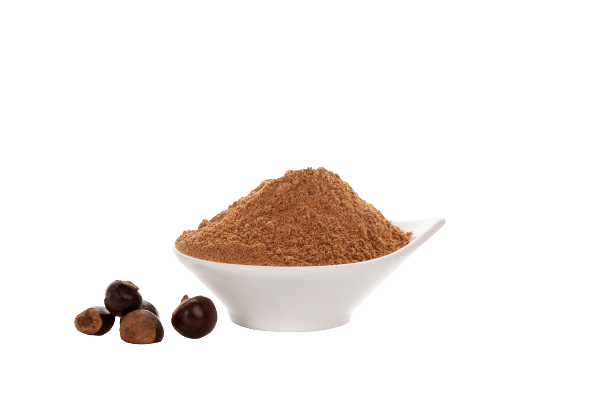
The powder would be collected in a gourd filled with water and mixed well. The drink was generally passed between members of the tribe.
Studies have compared these traditional techniques of preparing Guarana to modern-day industrialized methods. The traditional harvesting and cultivation techniques are comparable to modern techniques and processing techniques, such as those just described, to produce better quality goods [15].
Modern-Day Use
As Brazil was being colonialized, Guarana was sold to the settlers as a stimulant, tonic, and antidote for fighting fevers and the hardening of arteries.
Excessive consumption of the plant was discouraged by settlers, however, who warned of numerous side effects caused by overstimulation.
Ironically, guarana seeds’ exceptionally high caffeine content was originally expected to be a detriment to the plant’s export and global distribution.
However, it turned out that this became the plant’s primary marketing asset outside of Brazil.

Throughout the last couple of centuries, Guarana became less of a sacred health beverage and more of a commodity.
By the 1900s, it was becoming mass-produced throughout Brazil thanks to the invention of ice machines. Around this time, it became a novel export as well.
Carbonated Guarana first hit Brazilian shelves in 1909, first exclusively in the southern regions. The beverage’s popularity surged quickly, however, and independent soda producers began to make variations of the drink across the country.
Currently, however, the vast majority of guarana production goes towards developing energy drinks.
Approximately 70% of industrial/agricultural Guarana ends up in energy drinks; the remaining 30% of exported Guarana is generally powdered and sold in capsules or as a bulk product.
The bulk guarana powder is either directly consumed by individuals or sold as an ingredient in pharmaceutical or cosmetic products.
The plant’s wide variety of pharmacological and herbal actions make it an exciting option for these industries.
Modern guarana seeds are processed in extensive facilities with machines built to mimic the traditional roasting and grinding.
Scientific Evidence for Guarana
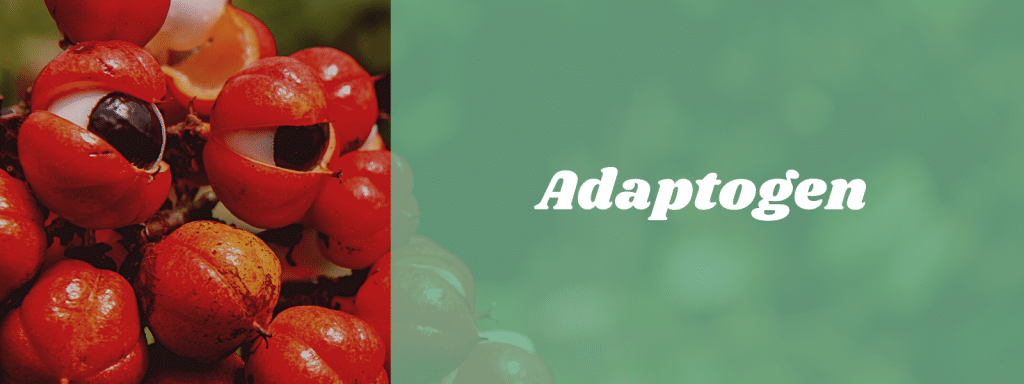
Guarana As an Adaptogen
Guarana has been studied for its adaptogenic benefits in animal studies. One study evaluated using a low dose of guarana extract (3 mg/kg over nine months) [16].
The study observed performance in swimming and the reversal of performance deficit.
The benefits observed were more significant than those attributable to caffeine itself.
Since the amount of caffeine present in such a low dose produced stronger effects than a higher dose of 30 mg/kg, it is understood that other alkaloids are highly influential.
Tannins and saponins are suspected to be responsible for improving cognitive deficits.
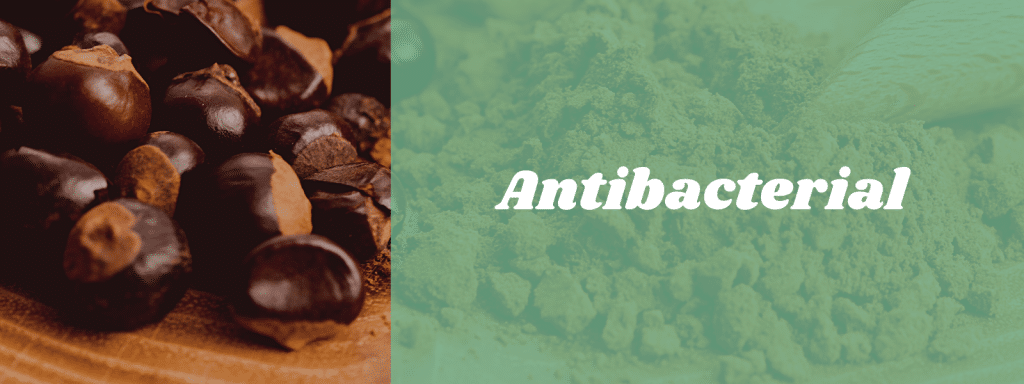
Guarana As an Antibacterial
An alcohol-based extract of Guarana exhibited antibacterial effects against gram-negative and gram-positive bacteria. The most potent effect was exerted against the strains P. aeruginosa, P. mirabilis, P. vulgaris, and E. coli [17].
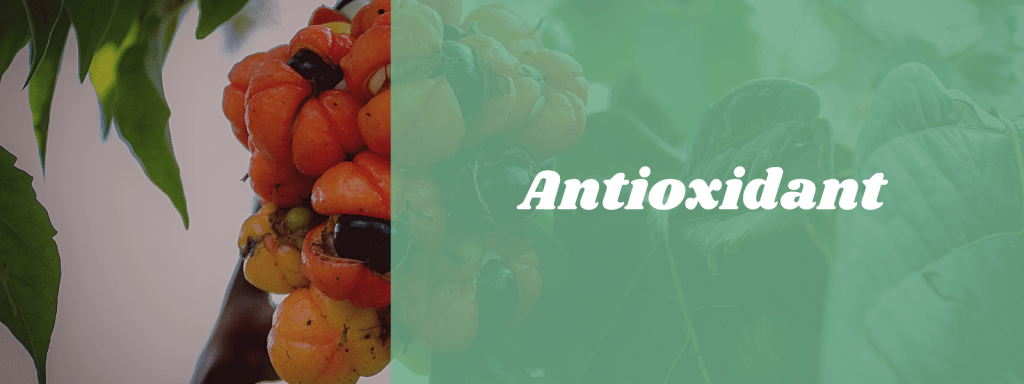
Guarana As an Antioxidant
Guarana is widely known to be a powerful antioxidant-containing plant. The polyphenols in the seeds, as well as the active alkaloids, all possess antioxidant activity. The most potent antioxidant is catechol [16].
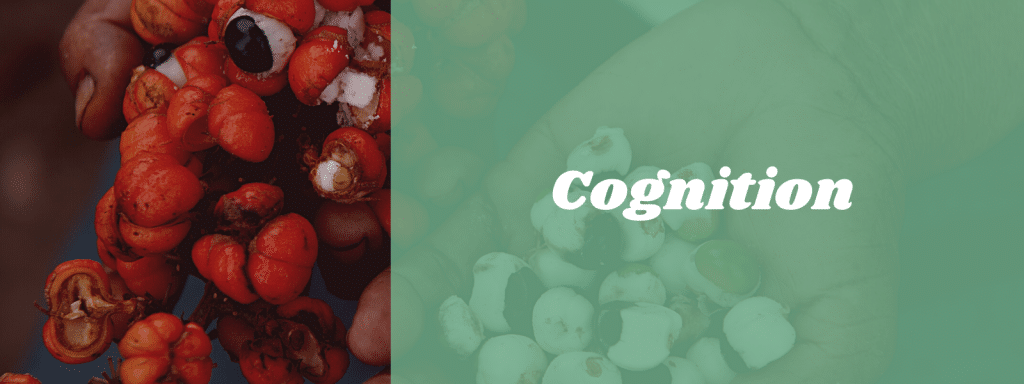
Guarana for Cognition
Guarana can help to enhance numerous aspects of cognition [16].
It helps reduce the effects of induced amnesia in rat studies. Researchers speculate this is due to the plant’s antioxidant capabilities.
The presence of xanthine alkaloids can reduce symptoms of depression in people who consume Guarana.
Though few studies have observed the effects of these alkaloids, specifically regarding their effects on depression, there is a consistent link between xanthine alkaloids and improved mood [18].
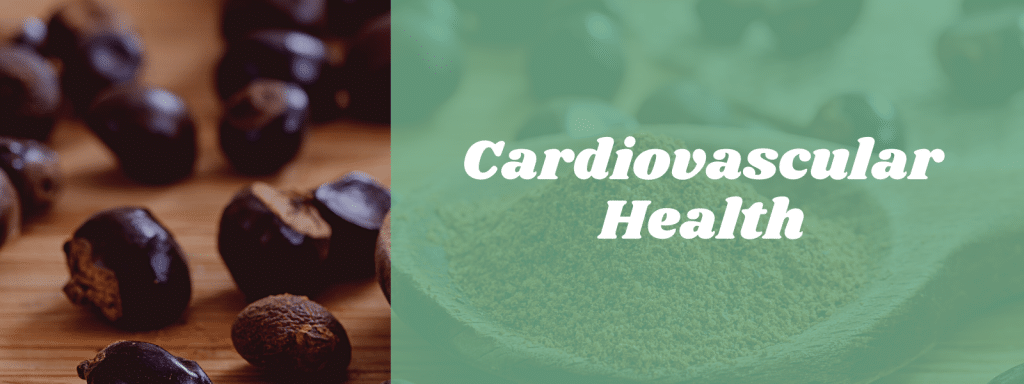
Guarana for Cardiovascular Health
Guarana is excellent for cardiovascular health for several reasons.
Firstly, Guarana can help to reduce high blood pressure. Its antihypertensive ability was first observed in a study evaluating the effects of long-term guarana consumption among elderly Brazilian people [19].
Despite consuming extremely high quantities of caffeine, the elderly group didn’t show the typical symptoms of hypertension associated with high caffeine intake.
Researchers suggested that rather than due to cardioprotection activity, this was due to caffeine tolerance.
However, guarana does produce other cardioprotective benefits. It can help to inhibit platelet aggregation and enhance weight loss, reducing the likeliness of cardiovascular disease. Guarana is also a vasodilator.
Guarana contains several tannins and gallotannins that are also in green tea. These are known to inhibit calcium channels and can produce cardioprotective benefits.

Guarana for Cancer
Guarana was proven to help reduce the proliferation of cancer cells in vivo. In addition to hindering cancerous cell reproduction, the plant extract increased the rate of apoptosis [20].
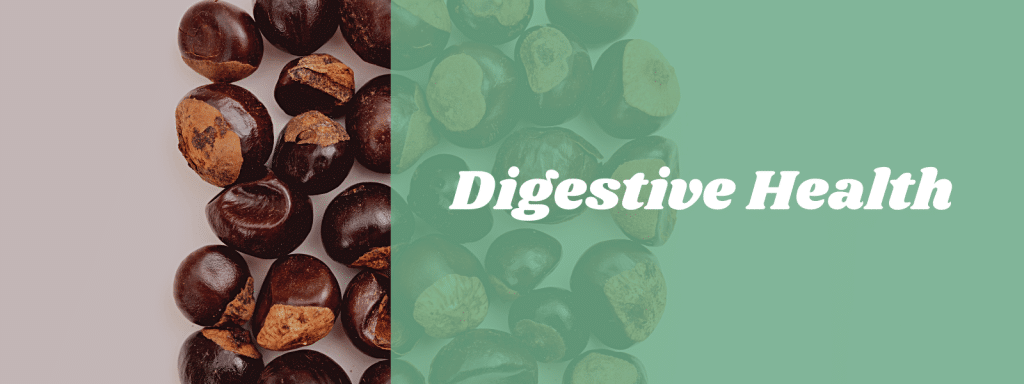
Guarana for Digestive Health
Guarana contains numerous polyphenols, including caffeic acid, gallic acid, and tannic acid. These are possibly responsible for Guarana’s ability to protect the body against gastric lesions [16].
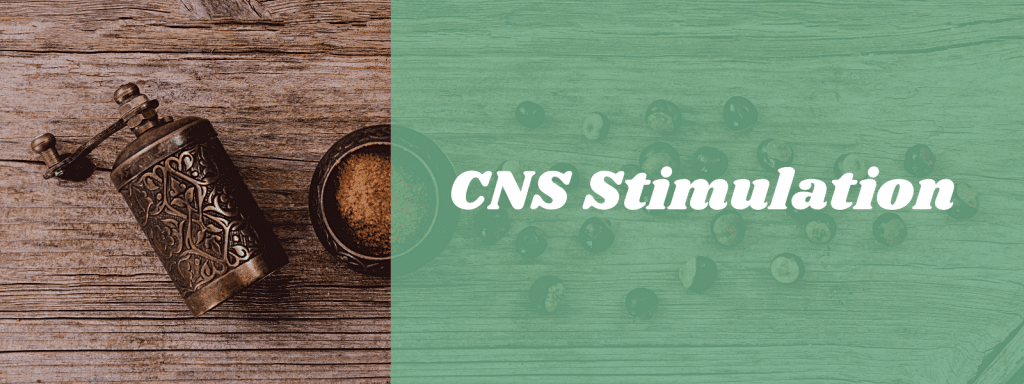
Guarana for CNS Stimulation
In addition to its high caffeine content, Guarana contains numerous xanthine alkaloids. This allows the plant to provide users with the typical benefits of CNS stimulation, including enhanced cognition and focus, improved alertness, and reduced mental fatigue [18].
Guarana was also shown in a study to help reduce fatigue associated with chemotherapy. The study followed a group that took either a placebo or a 37.5mg dry extract dose of Guarana starting one week after chemotherapy. Doses were received twice daily [21].
The study, which followed 40 people, provided interesting results; 36 of the 40 patients noted significant improvements that persisted until at least the three-week follow-up.
Seventeen of the patients receiving a placebo noted improvement, and 16 of the patients receiving Guarana reported improvement. Thus, more people in the placebo group experienced significant improvement.
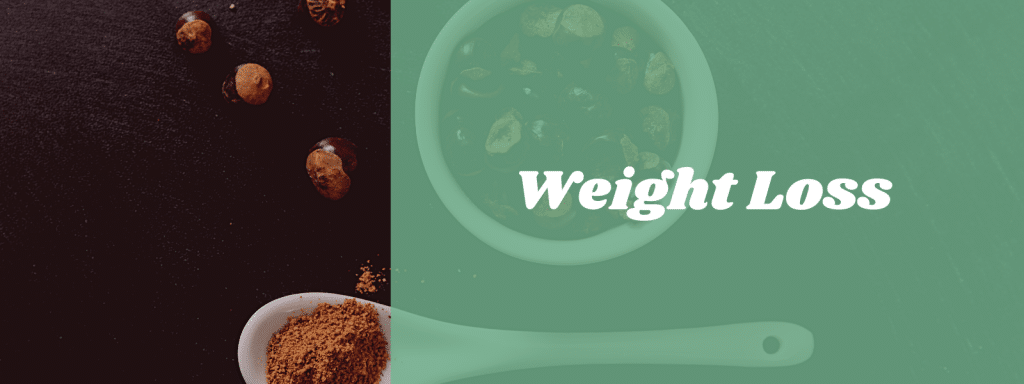
Guarana for Weight Loss
Guarana is a beneficial plant for anybody interested in losing weight. It helps to enhance fat metabolism and increase the amount of energy expended at rest [16].
Safety & Precautions
Guarana is the world’s most concentrated natural source of caffeine.
As such, you must follow the standard safety precautions one would follow when imbibing caffeine, perhaps more so than when drinking other caffeinated beverages.
Caffeine can cause harmful effects, especially with long-term, daily, excessive consumption [22].
Excessive caffeine can lead to symptoms such as:
- Anxiety
- Changes in mood
- Elevated blood pressure
- Insomnia
- Irregular heartbeat
- Irritability
- Jitteryness
- Twitching

Pregnant women should also avoid consuming Guarana unless cleared by a healthcare professional.
Avoid taking Guarana if you have cardiovascular disease. People who are prone to anxiety and overstimulation should avoid using Guarana.
Conclusion: Guarana for Energy & Health
Guarana is an incredibly useful and highly energizing plant originating from South America. The indigenous people have been using it for centuries as a stimulant and a general health tonic.
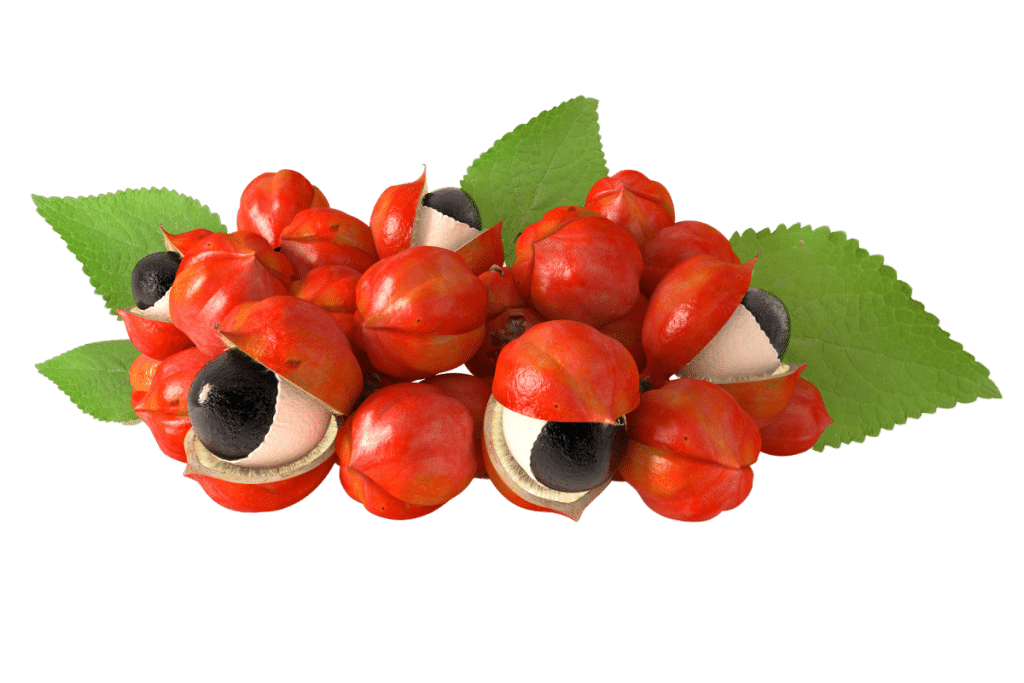
Ever since its discovery by the early colonizers, Guarana has developed a reputation for being one of the most potent and most highly caffeinated plants in the natural world. With a caffeine concentration exceeding that of coffee and various other alkaloids that enhance and balance the stimulation, Guarana is an excellent alternative.
Scientific studies continue to prove the usefulness of Guarana in the modern world. We can only guess what they are yet to discover.
- Smith, N., & Atroch, A. L. (2010). Guarana’s journey from regional tonic to aphrodisiac and global energy drink. Evidence-based complementary and alternative medicine, 7(3), 279-282.
- Beck, H. T. (1991). The taxonomy and economic botany of the cultivated’guarana’and its wild relatives and the generic limits within the Paullinieae (Sapindaceae).(Volumes I and II). City University of New York.
- Marques, L. L. M., Panizzon, G. P., Aguiar, B. A. A., Simionato, A. S., Cardozo-Filho, L., Andrade, G., … & de Mello, J. C. P. (2016). Guaraná (Paullinia cupana) seeds: Selective supercritical extraction of phenolic compounds. Food Chemistry, 212, 703-711.
- Ashihara, H., Sano, H., & Crozier, A. (2008). Caffeine and related purine alkaloids: biosynthesis, catabolism, function and genetic engineering. Phytochemistry, 69(4), 841-856.
- Fredholm, B. B. (2010). Methylxanthines (Vol. 200). Springer Science & Business Media.
- Schimpl, F. C., Kiyota, E., Mayer, J. L. S., de Carvalho Gonçalves, J. F., da Silva, J. F., & Mazzafera, P. (2014). Molecular and biochemical characterization of caffeine synthase and purine alkaloid concentration in guarana fruit. Phytochemistry, 105, 25-36.
- Bempong, D. K., & Houghton, P. J. (1992). Dissolution and absorption of caffeine from Guarana. Journal of Pharmacy and Pharmacology, 44(9), 769-771.
- Persson, C. G. (1986). Overview of effects of theophylline. Journal of Allergy and Clinical Immunology, 78(4), 780-787.
- Monteiro, J. P., Alves, M. G., Oliveira, P. F., & Silva, B. M. (2016). Structure-bioactivity relationships of methylxanthines: Trying to make sense of all the promises and the drawbacks. Molecules, 21(8), 974.
- Kohno, Y., Ji, X. D., Mawhorter, S. D., Koshiba, M., & Jacobson, K. A. (1996). Activation of A3 adenosine receptors on human eosinophils elevates intracellular calcium. Blood, 88(9), 3569-3574.
- Wells, J. N., & Miller, J. R. (1988). [46] Methylxanthine inhibitors of phosphodiesterases. In Methods in enzymology (Vol. 159, pp. 489-496). Academic Press.
- Fredholm, B. B. (1979). Are methylxanthine effects due to antagonism of endogenous adenosine?. Trends in Pharmacological Sciences, 1(1), 129-132.
- Weiss, J. F., & Landauer, M. R. (2000). Radioprotection by Antioxidants a. Annals of the New York Academy of Sciences, 899(1), 44-60.
- Oñatibia-Astibia, A., Martínez-Pinilla, E., & Franco, R. (2016). The potential of methylxanthine-based therapies in pediatric respiratory tract diseases. Respiratory medicine, 112, 1-9.
- Henman, A. R. (1982). Guaraná (Paullinia cupana var. sorbilis): ecological and social perspectives on an economic plant of the central Amazon basin. Journal of ethnopharmacology, 6(3), 311-338.
- Mendes, F. R. (2011). Tonic, fortifier and aphrodisiac: adaptogens in the Brazilian folk medicine. Revista Brasileira de Farmacognosia, 21, 754-763.
- Basile, A., Ferrara, L., Del Pezzo, M., Mele, G., Sorbo, S., Bassi, P., & Montesano, D. (2005). Antibacterial and antioxidant activities of ethanol extract from Paullinia cupana Mart. Journal of ethnopharmacology, 102(1), 32-36.
- Silvestrini, G. I., Marino, F., & Cosentino, M. (2013). Effects of a commercial product containing Guarana on psychological well-being, anxiety and mood: a single-blind, placebo-controlled study in healthy subjects. Journal of negative results in biomedicine, 12(1), 1-7.
- da Costa Krewer, C., Ribeiro, E. E., Ribeiro, E. A. M., Moresco, R. N., de Ugalde Marques da Rocha, M. I., dos Santos Montagner, G. F. F., … & da Cruz, I. B. M. (2011). Habitual intake of guaraná and metabolic morbidities: an epidemiological study of an elderly Amazonian population. Phytotherapy Research, 25(9), 1367-1374.
- Cadoná, F. C., Rosa, J. L., Schneider, T., Cubillos-Rojas, M., Sánchez-Tena, S., Azzolin, V. F., … & da Cruz, I. B. M. (2017). Guaraná, a highly caffeinated food, presents in vitro antitumor activity in colorectal and breast cancer cell lines by inhibiting AKT/mTOR/S6K and MAPKs pathways. Nutrition and cancer, 69(5), 800-810.
- Del Giglio, A. B., Cubero, D. D. I. G., Lerner, T. G., Guariento, R. T., De Azevedo, R. G. S., Paiva, H., … & Giglio, A. D. (2013). Purified dry extract of Paullinia cupana (guaraná)(PC-18) for chemotherapy-related fatigue in patients with solid tumors: an early discontinuation study. Journal of dietary supplements, 10(4), 325-334.
- James, J. E., & Stirling, K. P. (1983). Caffeine: a survey of some of the known and suspected deleterious effects of habitual use. British Journal of Addiction, 78(3), 251-258.




